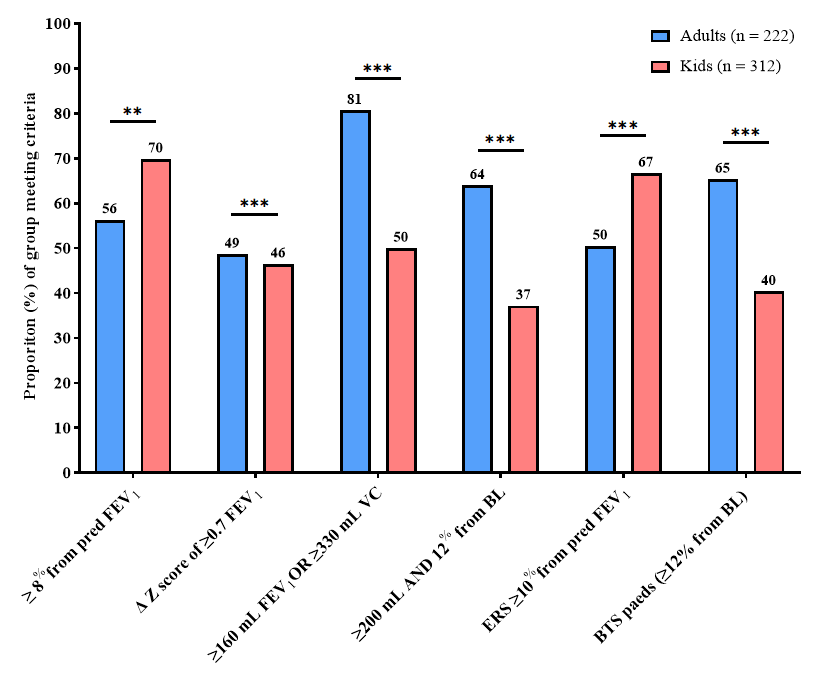Abstract
Introduction: The level of change in lung function to define a clinically meaningful reversibility test is the source of much debate.
Aim: To improve understanding of the sensitivity of bronchodilator thresholds in children and adults with severe asthma.
Methods: Data from reversibility assessments (2.5 mg nebulised salbutamol) were retrospectively analysed from patients with confirmed severe asthma. The sensitivity of reversibility testing was assessed against 6 commonly used criteria. Changes in forced expired volume in one second (FEV1) after bronchodilation were assessed and presented as median and IQR. Differences between children and adults were assessed with Chi-squared or Fisher?s exact test, with significance accepted at an ?-level of p<0.05. Reference values for FEV1 were calculate using current Global Lung Initiative reference equations.

Results: Median improvement in FEV1 was 290 mL (160-497) for adults and 150 mL (40-340) for children. In those with a positive bronchodilator response (200 mL and 12%), 86.4% (223 of 258) had obstructive spirometry at baseline.
Conclusions: 8% and 10% change from predicted criteria are most sensitive to asthma in children. In adults, a lower threshold of ?160 mL change in FEV1 offers much higher sensitivity; however, the implications for diagnostic specificity are unclear.
References
1. Stanojevic et al, 2022, ERS technical standard on interpretation of lung function tests, ERJ.